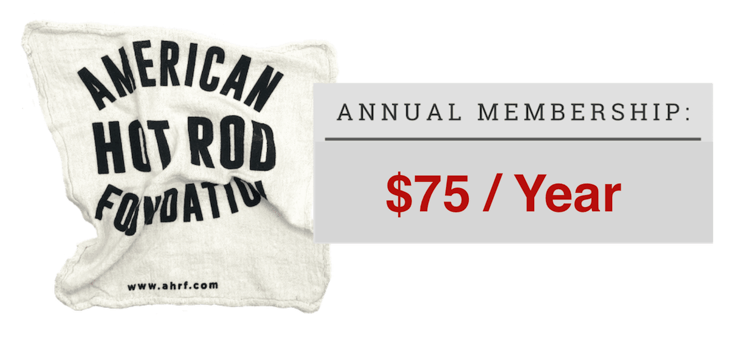Raised in the affluent suburb of Scarsdale, New York, Gareth William “Bill” Neumann’s first memories of cars were of Cadillacs and Lincolns. Except for some local midget racing, hot rodding was practically non-existent in the mid-40’s and drag racing hadn’t even been technically invented. But weekly pilgrimages to the local oval tracks had young Neumann hooked on speed and laid the foundation for an incredibly successful career in the automotive world.
At the age of 15, Neumann, who was already taking flying lessons, bought a ’28 Model A Ford from a high school senior. The summer of ’45 was dedicated to fixing the car; tearing it down and building it back up only better than before. When a friend of his also bought a ’28 Bill realized they had the makings of a drag race or two. Street racing in Scarsdale was born!
With the help of his friend Eddie Watts, a local midget racer, Bill soon became an accomplished mechanic with a desire for more speed. He quickly swapped his stock 85 hp flathead Ford for a 115 hp Merc’ V8. He ported and relived the block and installed Offy heads and a triple manifold. With dual pipes, Mallory distributor, and an SV cam, Neumann cemented his dubious reputation as the fastest street racer in town.
Things were about to change, however, with the arrival of HOT ROD Magazine (HRM) on the East Coast in 1950. It was to revolutionize the way these kids built hot rods. After two years of reading and looking at pictures of Californian roadsters, Neumann set to work building a true hot rod. He settled on a ’31 Ford roadster; he couldn’t find a ’32. After convincing his dad that the “piece of junk” would in fact end up a beautiful hot rod, Neumann set to work. With HRM for instruction, a hacksaw and a set of whitewalls purchased by soon-to-be wife Florence, Neumann gutted the car and started from scratch. Deeply channeled over the frame, the Chevy engine’s triple air filters were level with the cowl and the top of the sectioned Deuce grille. The end result had every east coast rodder envious.
While there were only a few car shows at the time, Neumann’s hot rod took home the gold: People’s Choice; Best Upholstery; Best Paint; Best Engine Compartment; etc. Such was the quality of Neumann’s build he caught the attention of the east coast rodding magazines: Rods Illustrated, Speed Mechanics and Rodding & Restyling. Although working at a Ford dealership, Neumann began to moonlight as Technical Editor writing for New York-based Rodding & Restyling.
In 1958, HRM featured Neumann’s Roadster. Meanwhile, ever-busy Neumann was organizing hot rod shows and drag races on the east coast but a chance meeting in 1960 with HRM editor Bob Greene and Dick Day, editor of Car Craft magazine, started him down an amazing career path. They offered Neumann an Associate Editor position at Car Craft, in California. Consequently, the Neumann family upped sticks and relocated to California. Within nine months he was called to Robert E. Petersen’s office. He recalled, “I was called into Petersen’s office and told there was a big problem at R&C and that they fired everybody—down to the last secretary. Dick Day recommended me to straighten out everything that Pete and Wally Parks thought was wrong.” Starting with the December 1961 issue, Neumann was editor of Rod & Custom magazine. Contemporary Petersen promotional material declared: “Perhaps no one is more aware than are the editors of Rod & Custom that youth must be served.” It was a prophetic statement.
Circulation shot up and a spin-off magazine, Rod & Custom Models was launched. Neumann saying, “ I did both magazines at the same time… without a raise.” Neumann knew how to work. Sadly, in five years Neumann was forced out, the company saying, “We don’t need high-priced hot rodders to put out the magazines.” Given no choice, Neumann created his own agency specializing in advertising, engineering and consulting.
One of his pitches, in 1971, was to Ford Motor Company to build a hot Pinto. Not only did he modify the car, he dyno tested it and wrote features for publication in Popular Hot Rodding—he knew how the system worked. This project proved so successful Neumann turned into his first mail order parts business and formed Automotive Performance Systems (APS). In 1975, with the introduction of the Volkswagen Mk1 Golf, the Rabbit in the U.S., Neumann spotted another opportunity and frustrated by the poor quality parts available incorporated APS and went into the burgeoning business of tuning VWs.
In 1981, Neuspeed debuted the legendary “Thunder Bunny,” so dubbed by Motor Trend who verified its 0-60 mph time of 7.3 seconds. Back in the day, those were Super-Car times and the “Bunny” along with a simple, but immensely popular strut brace as its mainstay product, propelled Neuspeed into aftermarket orbit.
Since Neumann’s passing in 2016, the company has been run by his sons Gary and Aaron who continue Neumann’s philosophy of ingenuity, quality, advancement, and customer service. Neumann made a mark on the performance aftermarket in many areas and his legacy lives on.
By Tony Thacker
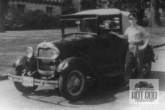


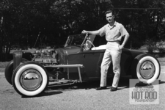

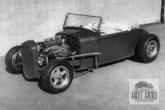
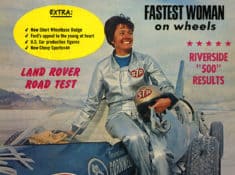 Paula Murphy
Paula Murphy Chuck Daigh
Chuck Daigh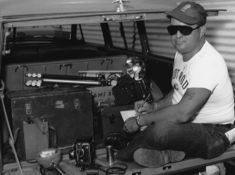 Eric Rickman
Eric Rickman J.C. Henning
J.C. Henning